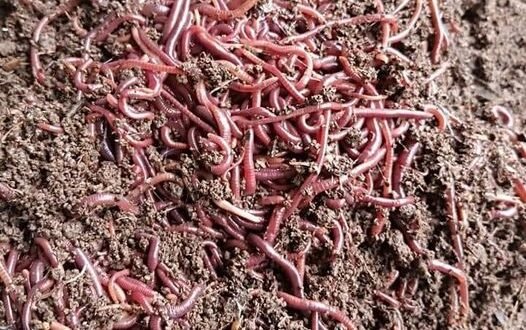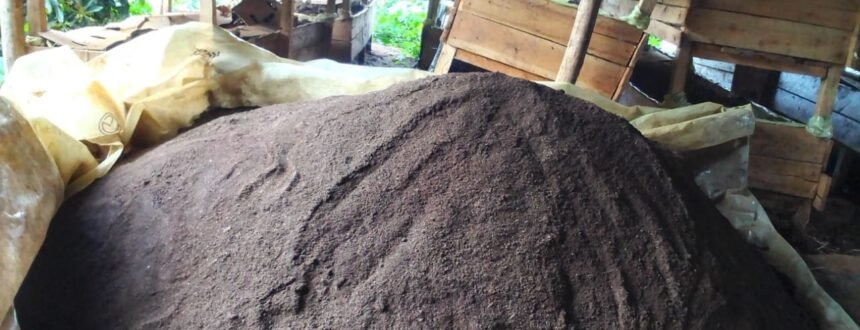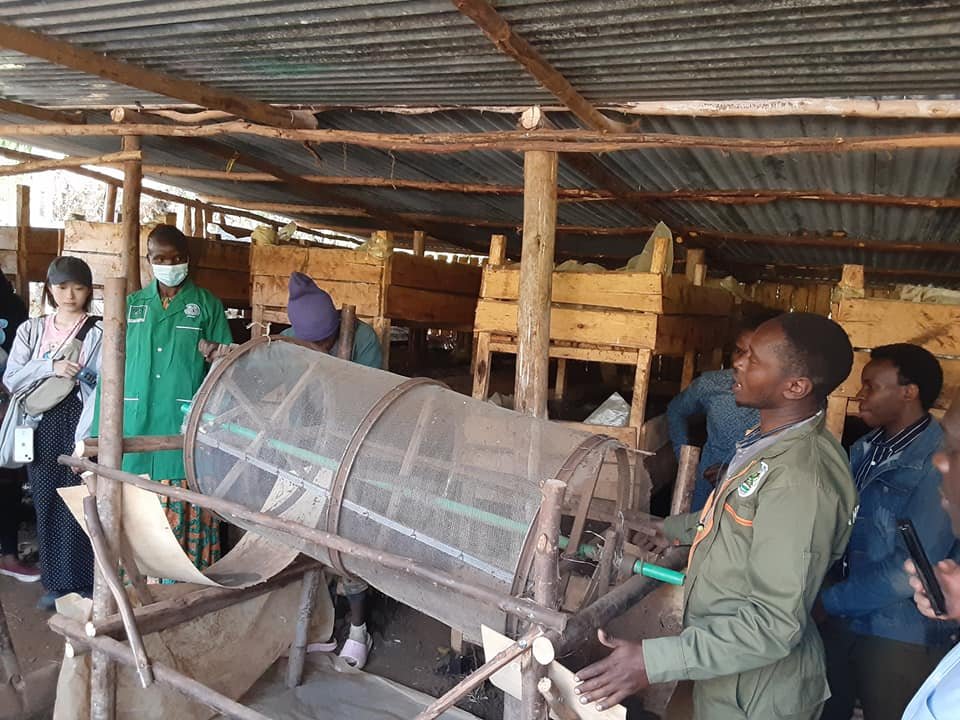How Kiambu Youth Is Turning Worms and Insects into Thriving Farming Business
By Zablon Oyugi
In most African societies, children are usually scared of worms and insects. In some instances, when sulking or crying, they would be threatened with words such as ‘nyamanza, dudu itakukula’, meaning: “Stop crying or insects will devour you”.
As a result, young children are brought up fearing insects, slugs, worms, butterflies, bees, spiders and even snakes and other creepy crawlies. This phobia continues even in adulthood.
Such fears could keep many children away from nature and the outdoors. Yet rearing worms and insects is now proving to be very lucrative.
Good examples include black soldier flies, red earthworms, African nightcrawlers, fishing worms, snails, bees, crabs, butterflies, ants, crickets, and even snakes. They are becoming huge income-generating activities for many agriprenuers, especially the youth.
George Muturi, 28, is one such youth who has mastered the art of rearing worms and insects, a practice which is not only enabling him to earn a decent living but also helping him in other lines of production, such as chicken and pigs rearing, besides exposing him to relevant partners and organisations championing agroecology.
“Worms and insects are unaware of humans. They are usually busy living their lives and many of them are harmless. They are very beneficial to us and the environment. I do not fear them. Some of those I rear have become my greatest friends,” says Muturi.
He is currently rearing red earthworms, which help turn animal and organic waste into nutritious, organic fertiliser called vermicompost and vermiliquid, an organic foliar.
This is in addition to black soldier flies whose larvae are good sources of protein for chicken and pigs. The worms also break down organic waste into nutritious farm manure.
How he started
In 2013 after he completed his secondary school education, Muturi decided to venture into vermiculture (rearing earthworms), a not-so-famous farming activity among Kenyans. This was because he lacked fees to advance to higher levels of education.
The worm-rearing idea was sold to him by a local farmer in 2015, two years after Muturi had started rabbit and poultry farming. The farmer was raising these worms and using them to break down cow manure for application to his kitchen garden.
On a small portion of family land in Kagaa, Kiambu County, Muturi restructured one of the rabbit sheds at a cost of Ksh500, after which he bought two kilos of starter worms at Sh2,500 from the farmer.
“This is how cheap starting vermiculture is. I wasted no more time,” says Muturi, adding that the worms feed on household or farm waste, which they convert to affordable organic fertiliser called vermicompost that he sells to farmers for crop production.
“Although I have recently stopped producing vermiliquid, due to time and cost reasons, the two products are liked by farmers, especially those who run kitchen gardens. The dark, rich, earthly smelling fertiliser and foliar amend the soil as they are full of primary and micronutrients, notes the farmer.
Indeed, worm casting also improves the physical property of the soil by improving the tilt, ferocity and moisture-holding capacities, advises Dr Freddie Acosta, a senior lecturer on Technology and Innovation Management at Strathmore Business School.
Adding vermicompost and vermiliquid to soil reduces insect pests and plant diseases and assists greenhouse crops such as corn, wheat, pea, cucumber, and tomato.

Possible economic returns
One kilogramme of earthworms (approx. 1,500 worms), if fed very well and given the right moisture and protection from predators mostly in January, can multiply and increase to approximately 4,000 kilogrammes by the end of December.
“To avoid chocking or dehydrating the worms, the organic waste materials should not be too dry or too wet,” advises Muturi.
For the cow manure, the worms’ main feed, a handful can be squeezed in between the fingers to gauge its moisture content. It is best if it releases some few drops of water.
The farmer says that after weeks of feeding on this type of feed, a farmer can produce tonnes of organic fertiliser, although this will depend on the number of worms per unit and the amount of organic waste they fed on.
Muturi harvests 100-150 kilos of vermicompost a month, which he sells at Sh70 a kilo, besides selling 10 kilos of the worms to other farmers every month at Sh2,000 a kilo, making about Ksh20,000 a month.
He used to harvest 80-100 litres of vermiliquid a month, selling a litre at Sh150. But he quit the venture to focus on vermicompost.
Currently, he has 17 units measuring 7x3x2 feet constructed with timber sideways, with the worms and the waste fully packed at the bottom.
The units are neatly built in a triple decker format to maximise the limited space. They are raised from the ground with posts, oiled up to four feet to prevent them from rotting and to keep away predators like safari ants which attack the worms.
He has also bought a modernised tuktuk and a motorbike which helps him with the movement of goods, besides a mechanical machine to properly sieve the broken-down compost from the worms and their eggs.
“These worms and their eggs are very delicate, hence the need for a proper way to separate the compost from them and other unbroken particles. This machine has been serving us efficiently as it can do three tonnes a day,” says Muturi. The machine is placed at the entrance of the structure.

Black soldier flies
Besides the earthworms, he is also rearing black soldier flies (BSF) to boost his poultry and pig farming. In addition, he rears black soldier flies (BSF) to enhance the two farming ventures.
The BSF larvae serve multiple purposes: they help in breaking down organic waste into valuable compost, which can be used to enrich the soil, and they provide a high-protein feed for his chicken and pigs, further helping him cut down on production costs.
“During their larval stage, these insects consume a significant amount of organic waste, producing organic fertiliser. The larvae are highly nutritious and make excellent feed for my chicken and pigs,” notes Muturi.
Azolla cultivation
The enterprising farmer is also growing azolla, one of the seven species of aquatic ferns in the family of salviniaceae, in small pods within the compound.
The green plant is a good feed for livestock, especially cattle, pigs, rabbits and poultry. It is propagated vegetatively and grows vigorously to maturity in about 14 days.
“We only feed it with vermicompost from our worms’ yard. This speeds up its growth and, in two weeks, I harvest it to feed the pigs, rabbits and chicken. I sell some of it to the neighbouring farmers at Ksh200 a kilo,” says Muturi, adding that the free-floating aquatic fern can also be used as a bio-fertiliser.
Set-up services
He has since started his own startup, Comfort Worms and Insects, through which he is designing a simple three-in-one vermiculture system for kitchen gardeners at a small fee. He uses three buckets to enable the farmers to rear the worms and collect vermicompost and vermiliquid.
To begin with, one needs three buckets of 20 litres capacity with wide tops and narrow bottoms, rabbit manure and five kilos of starter-worms worth Sh2,500. The buckets are inserted into each other in such a way that they do not touch each other at the bottom.
The topmost bucket in which the worms, rabbit manure and fresh organic wastes such as fruit and vegetable remains are placed, is covered at the top and some holes made on the upper sides for fresh air.
The worms, rabbit manure and fresh organic wastes are sandwiched in between, with some dry materials such as grass at the top and bottom. Some holes of various sizes are made at the bottom of the bucket to allow vermicompost and vermiliquid to pass through to the second bucket.
“Rabbit manure is preferable to any other type of manure because it speeds up the worms’ reproduction, leading to faster decomposition of the wastes for compost manure and vermiculture liquid,” explains Muturi.
The middle or second bucket is where the vermicompost is collected, depending on the activity of the worms on the organic wastes and the manure. The bucket has smaller holes than the upper one, allowing the vermiliquid from the worms in the top bucket to pass through to the bottom bucket.
The last bucket, which is raised a few inches from the ground using bricks, stones or wood, has a tap at the bottom through which the vermiliquid is tapped.
Vermicompost accumulated in the second bucket is used as manure for crops while vermiliquid collected in the bottom bucket acts as organic foliar and is best for crops such as fruits and vegetables.
Muturi installs the system for other farmers at Ksh4,500 for the 20-litre buckets and Ksh6,000 for the 50-litre bin.
Decent life
So far, the young farmer’s ventures are earning him a decent life in the rural Kagaa village. He has two permanent employees and hires up to 10 casuals on a need-by-need basis.
When the ‘Smart Farmer Africa’ team visited his farm, he was constructing a three-bedroom permanent house which was almost complete. “I am happy the farm is running itself and earning me some profit. With the proceeds, I am able to pay the farmhands, besides training youth in the area on organic farming,” says Muturi.
His clarion call to fellow youth is that there are great opportunities in farming at every point of the value chain. He adds: “Getting involved in this vital sector of the country’s economy is a sure way to guarantee you a good livelihood.



